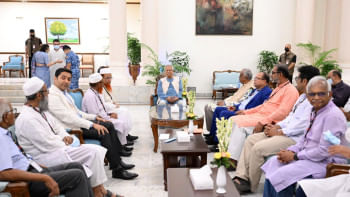Technology can help eradicate child marriage

In recent times, particularly during the pandemic, Bangladesh has seen an exponential rise in the number of child marriages across the country. The efforts of both the government and non-government organisations (NGOs) have done little to change this reality.
The pandemic gave rise to numerous challenges in Bangladesh such as high rates of unemployment, poverty, shortage of basic necessities like food and shelter, mass panic due to the virus and lack of medical attention. The situation was worse in rural areas, since most of the schools and colleges were closed for a prolonged period of time and because of huge job losses. As a result, poverty drove many families to reduce the number of mouths they had to feed by getting their girls married off at an early age.
Covid-19 cases have declined drastically in the last few months and some measure of normalcy has returned after the re-opening of schools and colleges. However, the increase in the dropout rate among female students at schools across the country is alarming. It shows how the pandemic has changed the lives of girls for the worse.
According to a study conducted by BRAC's Community Empowerment Program (CEP), the pandemic has caused the number of child marriages to climb sharply due to various socioeconomic factors such as extreme poverty, unemployment, financial losses, uncertainty about the future, etc. Only 20 percent of cases have been reported to the authorities, while the majority of the marriages took place under the radar and often remained undocumented.
In Rajshahi district alone, 6,500 female students became victims of early marriage during the countrywide shutdown of all educational institutions. In Khulna, around 3,000 underaged girls were married off during the lockdowns. The number of child marriage is equally high in the other districts of the country. And the official number could be significantly higher if a comprehensive survey is conducted. Sadly, the majority of these girls will not be returning to schools. As the movement of people is restricted and child marriage is spiralling out of control, can technology protect our girls and tackle this unseen epidemic?
Every educational institution in the country should have a confidential database where the information of all their students is collected for official records. School officials can play a crucial role by reporting incidents of early marriages to the relevant authorities, while proactively updating the details of their students' profiles on a regular basis. Law enforcement agencies along with educational institutions can work hand-in-hand to monitor the students within a specific area and take legal action against authorised marriage registry officials if they are found to be negligent in their duties. Moreover, financial incentives can be provided to poor families to discourage them from marrying off their daughters at an early age.
Educating the citizens on the negative impacts of child marriage is also an effective solution, which is why awareness campaigns should be conducted by state and private organisations across popular social media platforms to raise consciousness among the masses. According to the Child Marriage Restraint Act 2017, girls must be at least 18 years of age before they can be considered suitable for marriage. This law must be strictly enforced if Bangladesh wants to curtail the high rate of child marriage. The government must formulate a strategy in which a monitoring procedure will be implemented to check early marriages at the grassroots level. Digitising the marriage registration process can play a crucial role in bringing down the rate of underaged marriage.
The government has been working relentlessly towards a sustainable solution. It is planning to launch an online registration system (Bondhon.gov.bd) for marriage and divorce, which could help prevent child marriage by verifying the age of the couple involved. Once the whole system becomes digital, there will be less chances of unethical marriage practices and all concerned institutions could be held accountable for violating any of the laws. The number of marriages can also be monitored in real-time across the country and any marriage taking place outside of this national system will neither be registered nor recognised. At the end of the day, policymakers, law enforcement agencies and NGOs—both domestic and international—must work together on the best implementation of information technology and come up with a comprehensive strategy to find ways to eradicate child marriage in a sustainable way.
Farajj Rahman Khan is a mechanical engineer who currently works at Morris Garages (MG).

 For all latest news, follow The Daily Star's Google News channel.
For all latest news, follow The Daily Star's Google News channel. 



Comments